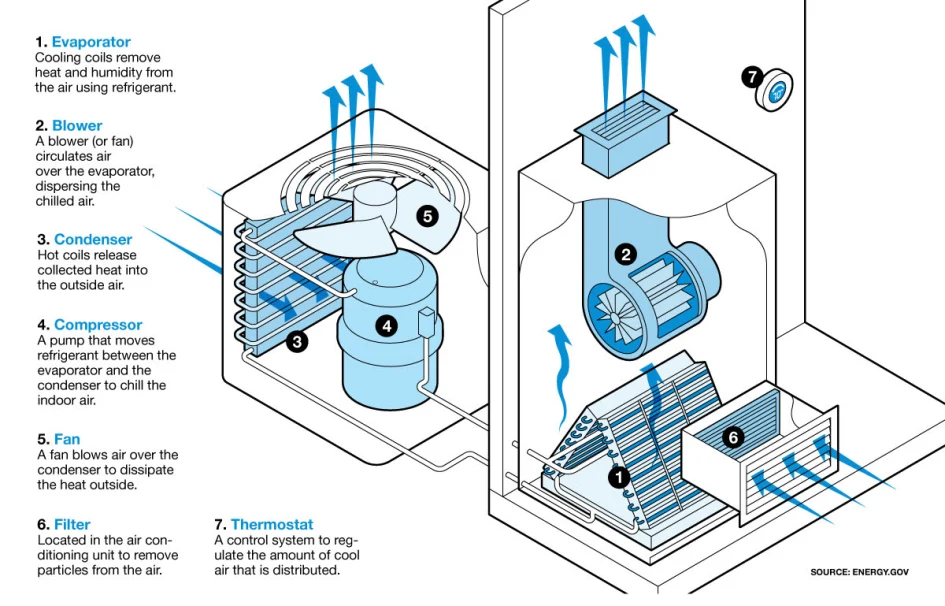How an Air Conditioner Works

To provide cooling throughout the home, an air conditioner transfers heat from a home’s interior to the outdoors.
The air handler portion of the AC system sits in your home, often in a basement or service room. A fan draws warm air from the room and passes it across a coil filled with cold refrigerant fluid. This cold fluid absorbs the heat from the air, which turns cool. A blower blows the cooled air around your house.
The outdoor condenser usually sits on the side of your house. It is connected to the indoor unit via a line set. After the refrigerant absorbs the heat from your home, it flows to the outdoor unit, which dissipates the heat. Important to note is the compressor, which circulates the refrigerant through the system. Now cool again, the refrigerant flows back to the indoor unit to continue the cycle. The figure above is a Central air conditioning system diagram.
